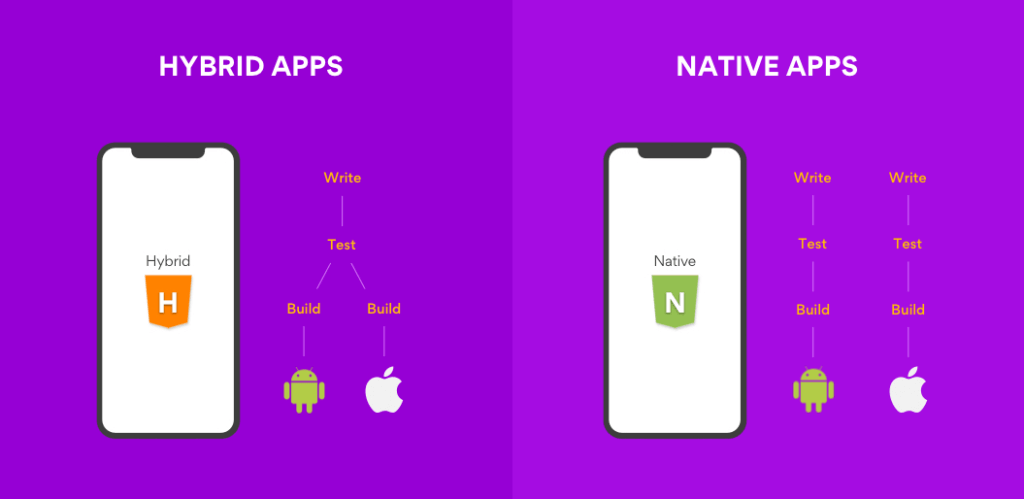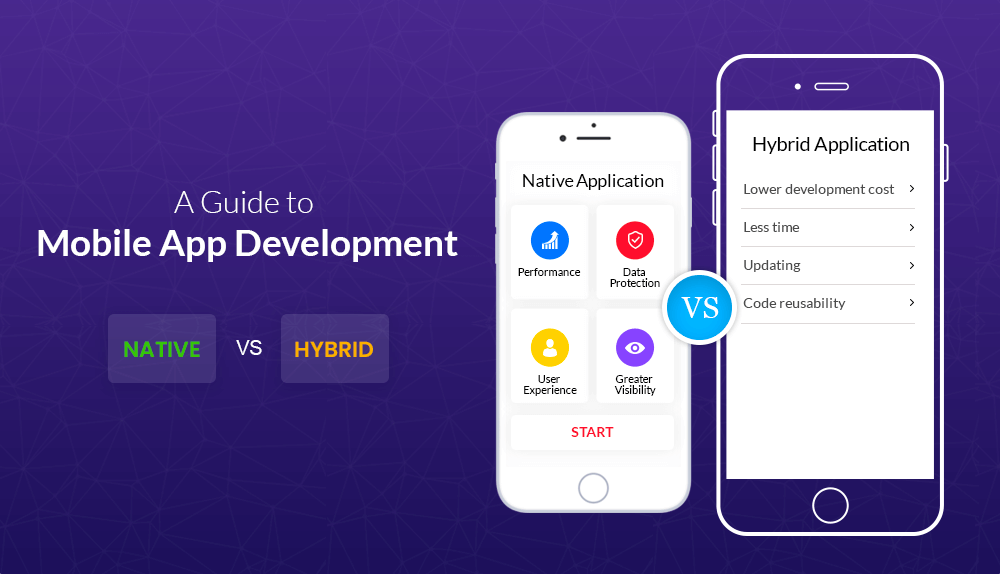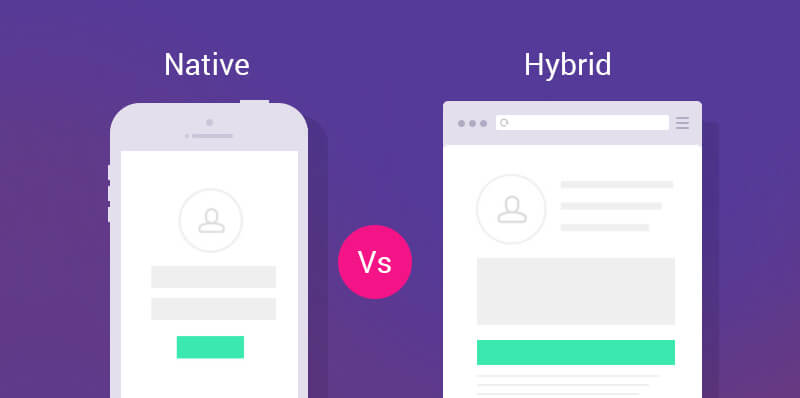Undeniably, the better a mobile app fulfills user expectations, the higher they set the bar. There is research backing up the fact that more than 80 percent of consumers won’t bother trying a mobile app more than twice if it failed to work for them the first time. ‘Bad design’, ‘poor user experience’, ‘slow load time’ and ‘immediate crash’ after installation are some of the primary reasons stated when asked about taking extreme decisions pertaining to uninstallation or immediate deletion. So by now you probably got the idea that the world of mobile app development is far more complex than it sounds. Like many, if you too are caught in the nitty gritty of mobile applications and are perplexed with the barrage of terminology involved, have a look at our verdict on native vs hybrid apps. What to choose in 2020? Read out our verdict on the difference between native and hybrid app and take the final call.
To understand native vs hybrid app comparison and understand the technical peculiarities of app development in a few words, it is worth considering that native apps are built with programming languages officially supported by the platform. For Android those languages are Java and Kotlin, while for iOS objective-C or Swift are used. Whereas for hybrid, several technologies Flutter, React Native, Framework 7, Ionic, PhoneGap frameworks are used. Keeping this in mind, it is time to dig in and take a closer view of technical aspects associated with hybrid and native apps by de tangling their pros and cons and obtaining clarity.
Hybrid App vs Native: Choosing the Right Mobile App

Understanding Native Apps
The apps which are created for a specific platform either iOS or Android is what constitutes native apps. Developed with the help of a native programming language, native apps compile a native code to run on a specific processor. Users can acquire these apps through an online store or marketplace such as Apple App Store, Google Play Store. The developer uses SDK (software development kit), a predetermined set of dev tools and IDE (integrated development background). This enormously allows the creation of native apps for a given operating system easier. Most popular hybrid app examples are Instagram, Evernote, Baskin Robbins, Remote POS, UBER, Gmail.
Benefits of Native Apps
Stability
Being fully supported by tech giants such as Apple and Android, there is negligible chance of them dropping support. As a result it ensures stability in terms of both maintenance and development.
Better App Performance
In comparison native apps run much faster because they are written in languages which are fully supported by the platform’s ecosystems. In addition to this, they also have wide access to exclusive APIs and components which are optimized for several screen sizes and system versions.
Highest Security
Protected not only by many different layers of an operating system but also the authorisation of official APIs with absolutely no dependency on any third party frameworks is what makes native applications a secure, well tested and reliable application.
Simplicity
The simplicity rendered by native SDKs allows developers to access device features including camera and GPS without bothering much about the complexities of native plugins. Consequently, this makes the development process faster and more streamlined as no performance issues can ever raise from faulty plugins.
Best UX/UI
There are plenty of UI/UX differences that not only gives fast loading time, ease of use but also delight during interaction with users. Here, native apps foster the best user experience, better scrolling, gesture recognition, superior effects and animations.
Drawbacks of Native Apps
Time Taxing
A little longer development time is required because developers have to create several different code bases for each of the platforms.
Updates can be Lengthy
Some of the updates can be tricky because developers will be building and releasing updates separately. This makes the update not only lengthy but challenging too.
High Cost and Requirements
When aiming for more than one platform, native apps are more expensive to build. Both developing and maintaining a native application on each platform requires different skill sets which ultimately result in adding more costs
Understanding Hybrid Apps
As the names suggest, this solution is a blend of both native and web applications. At their core, hybrid apps are software applications that juxtapose the elements of both native and web applications. It is written in languages like JavaScript, CSS, HTML 5. The popularity of hybrid apps facilitates developers to write code for a mobile app once and accommodate multiple platforms conveniently.
Benefits it upholds:
Low Cost with Ease of Development
The unified development nature of hybrid mobile apps allows developers to build a single version and write and maintain individual code bases for varied platforms. Businesses need not to spend separately for multiple versions of apps, thus big savings in both time and treasure is obtained with hybrid app development
Fast Deployment
The minimum viable approach MVP of hybrid apps necessitate the fastest deployment functional solutions allows SMEs to penetrate the market and establish competitive advantage.
Multi-Platform Support
Hybrid applications scarcely have any limits when it comes to expansion and support with other platforms.
High Performance and Speed
Hybrid apps need not rely much on the network communication therefore it runs quickly on the device screen irrespective of multiple users.
Easy Compilation and Run
Building hybrid apps allows the convenience of compilation once and run everywhere option. Hence, it simultaneously reaches a wider audience of iOS, Android platforms.
Drawbacks:
Internet Connection Limitations
Hybrid apps require constant internet connection to deliver its core range of features for the users. This way, Hybrid apps are dependable on different libraries, frameworks and a strong internet connection.
Native Plugins:
Hybrid apps are largely dependent on plugin access due to the nature of their architecture. As a result, building own plugins in assistance with developers further adds complexity and development costs.
Low Performance
In case of graphic intensive apps, the hybrid approach at times gives similar performance to native apps. For example HD games and other performance centric apps perform better on native.
Hybrid vs Native App — Which is Better?

Hybrid vs Native App 2020
One question that routinely surfaces in today’s modern development landscape is whether to build a native app or a hybrid app. Bearing in mind, both hybrid vs native apps pros and cons and generalizing their advantages and disadvantages, it is evident that most smartphones still fail to deliver a seamless hybrid app irrespective of its magnificent features such as single code base, cross compatible web technology and lower development costs initially.
However, when it comes to captivating a rich, wide and vivid user base, it is exceptionally good to better focus on Native Application Development. Despite its initial higher investment, most businesses are better off opting for native instead of hybrid for long term perspective.

